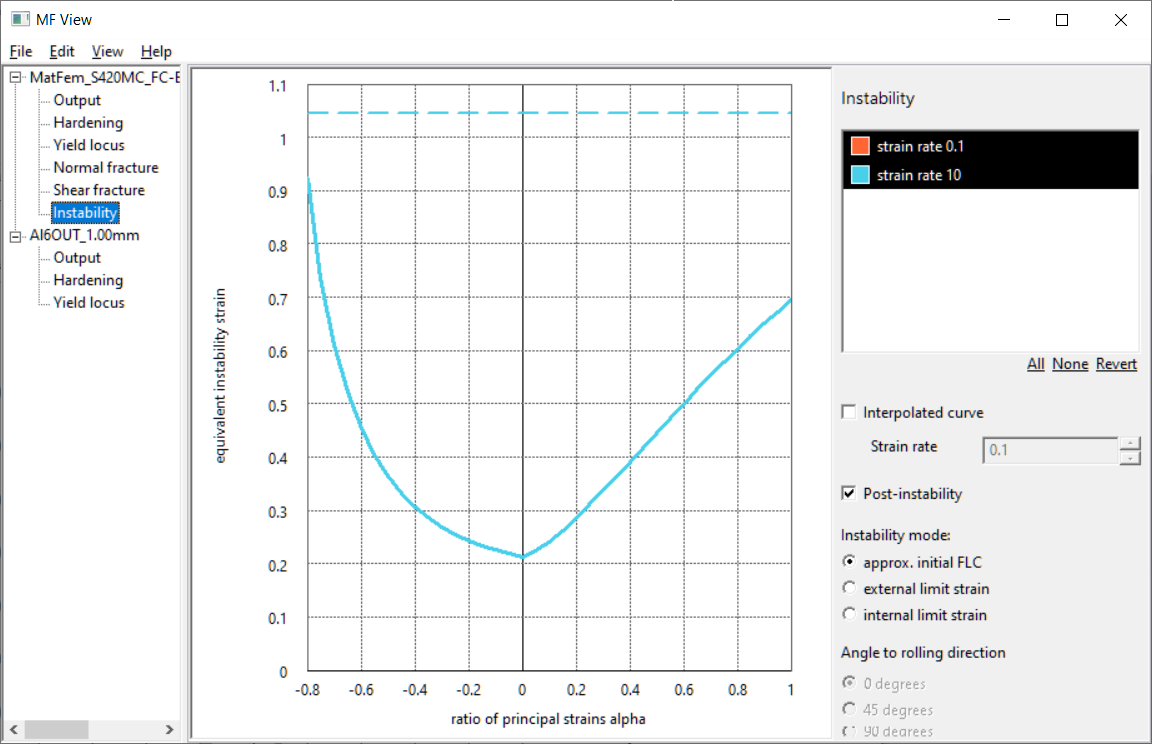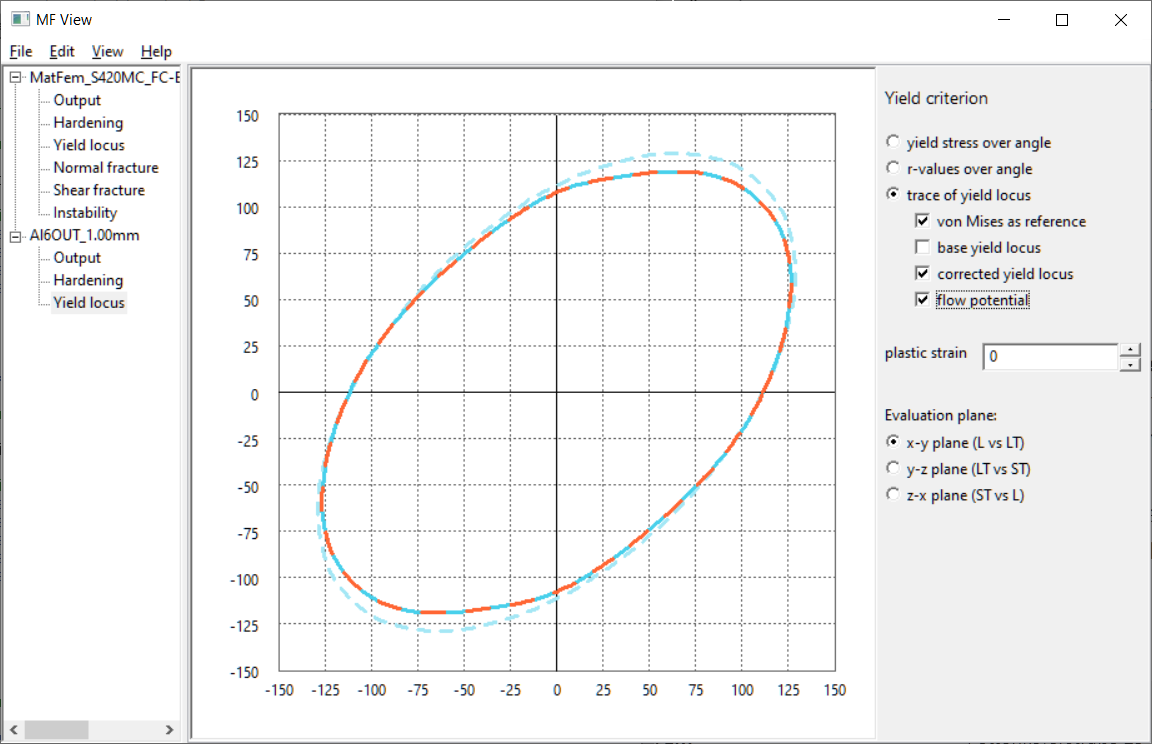MF GenYld + CrachFEM
MF GenYld + CrachFEM is a comprehensive material and
failure model that can be used in combination with
commercial explicit finite element codes.
It can characterize various metallic and polymer
materials for shell and solid element models.
MF GenYld + CrachFEM is:
Predictive
MF GenYld + CrachFEM aims to predict the material behaviour
under arbitrary load cases. Therefore, a comprehensive
suite of well-defined elemental tests should be carried out
to feed the material model. This technique is opposed to
iteratively adjusting data in calibration cycles of a
component simulation.
Modular
The principal building block of the material and fracture
model MF GenYld + CrachFEM is the module. Each module
describes one physical property. Modules are independent
of each other and may be combined freely depending on the
characteristics of the material.
Universal
MF GenYld + CrachFEM may be coupled to various explicit
finite-element solvers. Material data is input in the
solvers’ native format. It can easily be converted, though,
and data for one material can be used nearly
interchangeably between different solvers: The attached
model is the same in all solvers.
The material model MF GenYld describes the elasto-plastic
deformation of the material. It can model many physical effects of
plasticity and allows to model a wide range of materials.
The failure model CrachFEM uses the calculated stresses and
deformations to assess various modes of ductile and brittle failure,
either as post-processing value or transiently with element elimination
and post-critical models.
MF GenYld + CrachFEM can be coupled to various explicit
finite-element solvers. Support for implicit solvers is in progress.
Elasto-plastic model
The material model MF GenYld describes the elasto-plastic
deformation of the material.
The elastic behaviour of most materials is isotropic, but
orthotropic and strain-rate dependent elasticity
are important to model polymers correctly.
Strain-rate dependent hardening is a basic requirement for
modelling nearly all materials. The hardening can also depend on
temperature or other locally distributed values such as
hardness or the degree of anisotropy.
A variety of base yield criteria cover a wide range of
materials, especially sheet metals. These base yield criteria can be
scaled for different stress states and they can be different in
tension and compression.
Isotropic-kinematic hardening can describe the Bauschinger
effect where the yield stress changes after load reversal.
Some polymers cannot be considered incompressible. The
compressibility module can model volume changes under
plastic deformation.
With a few exceptions, the elasto-plastic behaviour of the
material can be modelled consistently with shell and solid
elements.
Comprehensive failure model
The failure model CrachFEM describes the onset of material failure.
It includes:
Failure is evaluated as failure risk, which can be
used as criterion for element elimination. If statistical data
is available, failure probabilities can be assessed.
CrachFEM distinguishes between the ductile fracture modes
normal fracture due to microvoids under tensile loads and
shear fracture due to shear band localization. These
models are complemented by optional post-critical models.
Thin-walled metal parts are subject to tensile instability.
The instability itself does not constitute failure. Post-instability
models can model the subsequent fracture.
A stress-based fracture criterion can model brittle fracture
in metals or polymers. In glass and ceramics, this is the only fracture
mode.
Depending on the material, damage accumulation can be linear or
tensorial. In addition, there is a true anisotropic
fracture model that determines the fracture direction.
Porosity in castings contributes to a higher risk against
normal fracture. The porosity can evolve during the simulation
starting from an initial porosity.
Process chains and manufacturig
CrachFEM can model the material throughout process chains
by mapping results from one stage to the next.
Local variations in the material behaviour of manufactured parts can be
accounted for with suitable initialization
methods.
A rich ecosystem
MF GenYld + CrachFEM is mature and has a broad user
base. The material and failure models are under steady
development. New features are being integrated according to
our experience with industry and research projects.
MF GenYld + CrachFEM is complemented by a rich ecosystem
of utilities:


The utility MF Crypt encrypts material data sets
of MF GenYld + CrachFEM, so that their contents cannot
be read or modified.
The command-line utilities MF Orient and
MF Interproc help you with defining a suitable
orientation distribution for your mesh and with preparing
element state data for the inclusion of local effects.
We are in contact with our customers, with preprocessor
vendors and with creators of third-party software to make the
integration of MF GenYld + CrachFEM seamless
in your simulation environment.